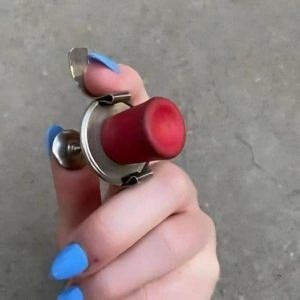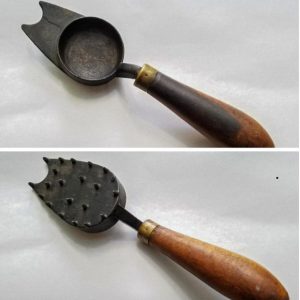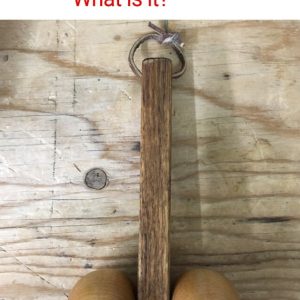Vintage glass tube cutters are more than just tools from the past; they are intricate pieces of history that have shaped the way industries work with glass. These cutters were essential in fields ranging from scientific laboratories to artisan workshops. Their rich history, innovative design, and lasting impact provide a fascinating look into the evolution of precision glassworking. Let’s explore the journey of vintage glass tube cutters and understand why they remain relevant today.

A Historical Overview: How Glass Tube Cutters Came to Be
The origins of glass tube cutters date back to the early 20th century. Before their invention, the process of cutting glass was rudimentary and prone to errors. Glassworkers relied on manual techniques—often resulting in jagged edges and broken pieces. For industries that required precision, like scientific research or glassblowing, this inefficiency was problematic.
This need for precision led to the invention of the vintage glass tube cutter, a tool specifically designed to create accurate, clean cuts in glass tubing. The earliest models featured a rotating cutting wheel and a method to break the glass along a scored line. This simple mechanism revolutionized glassworking by allowing more control over the cutting process. As time passed, these cutters became more sophisticated, incorporating better materials and refined designs to meet the increasing demand for precision.
The Technology Behind the Tool: How Vintage Glass Tube Cutters Worked
At the core of the vintage glass tube cutter was its rotating cutting wheel. This small, circular blade would score the glass with a precise incision. Once the score line was made, a small amount of pressure would snap the glass cleanly along the line. The brilliance of this design was its simplicity.
Unlike older methods, which involved crude tools or excessive force, the vintage glass tube cutter allowed for clean, accurate cuts with minimal wastage. The tool typically featured a handle for grip, a cutting wheel, and a guide to ensure the glass tube stayed steady during the process. For many users, this combination of elements made the cutter an indispensable part of their toolkit.
The operation itself was straightforward but required skill. Users had to apply just the right amount of pressure to score the glass without cracking it. Afterward, they would gently apply force to break the glass along the score line. It was a delicate process but one that, when done correctly, produced flawless results.
Where They Were Used: The Practicality of Vintage Glass Tube Cutters
The primary use of vintage glass tube cutters was in environments where precision was critical. In scientific laboratories, for example, researchers relied on these tools to cut glass tubing to specific lengths for experiments and equipment. Whether building a complex apparatus or setting up a chemical reaction, scientists needed precise glass cuts to ensure accurate results.
Similarly, glassblowers and craftsmen used these cutters to create bespoke glass pieces. For artisans, a clean, straight cut was essential for producing high-quality work. The tool’s ability to create precise cuts enabled them to shape glass with greater control and finesse.
Manufacturing industries also adopted these cutters, using them in the production of glass products like lightbulbs, vials, and other glassware. The reliability of the vintage glass tube cutter made it a mainstay in these industries until more modern and automated methods came along.
The Legacy of Vintage Glass Tube Cutters: Influencing Modern Technology

Though modern technology has advanced beyond the manual operation of vintage glass tube cutters, their legacy is undeniable. The basic principles of scoring and snapping the glass remain the foundation of contemporary glass-cutting techniques. Today’s automated machines, capable of making hundreds of cuts in a fraction of the time, still follow the same concepts that vintage glass tube cutters pioneered.
What’s more, the craftsmanship and precision of vintage glass tube cutters continue to be admired by collectors and enthusiasts. These tools are not just functional items but also representations of a time when manual skill and engineering came together to solve real-world problems. Many of these cutters, built to last, are still functional today, a testament to their durability and thoughtful design.
The influence of vintage glass tube cutters extends to high-precision devices used in industries such as electronics and medical equipment manufacturing. While today’s tools are faster and more efficient, the emphasis on accuracy and clean cuts has not changed. The vintage glass tube cutter paved the way for these innovations, making it a crucial part of the history of glassworking.
Why Collectors Value Vintage Glass Tube Cutters
For collectors, vintage glass tube cutters are more than just relics—they are artifacts of industrial history. Each cutter tells a story of an era when craftsmanship mattered, and tools were made to last. The intricate designs of these cutters, along with their historical significance, make them sought-after pieces in the world of vintage tool collecting.
Collectors appreciate the engineering behind these tools, often displaying them as part of larger collections of vintage scientific or industrial equipment. Some enthusiasts restore old glass tube cutters to working condition, while others value them for their aesthetic and historical value.
In many ways, these tools are reminders of a time when industries had to rely on manual methods, where the skill of the user was just as important as the tool itself. This combination of historical significance and craftsmanship is what makes vintage glass tube cutters a treasured part of many collections.
The Relevance of Vintage Glass Tube Cutters in Today’s World

While the tools may have been replaced by more advanced technology, the legacy of vintage glass tube cutters lives on. Their contribution to the fields of science, industry, and craft cannot be overstated. These tools not only provided a practical solution to glass cutting but also set the foundation for modern advancements in precision cutting.
In today’s world, where mass production and automation dominate, there is still a certain nostalgia and appreciation for tools like the vintage glass tube cutter. They remind us of a time when craftsmanship and skill were intertwined, and every cut mattered.
Conclusion: Celebrating Precision and Craftsmanship
Vintage glass tube cutters symbolize the intersection of innovation, precision, and craftsmanship. From their early beginnings in laboratories and workshops to their lasting influence on modern cutting technology, these tools have played a pivotal role in the history of glassworking. Their straightforward yet ingenious design reflects the ingenuity of their time, while their enduring relevance speaks to the lasting importance of accuracy and skill. As both functional tools and collectibles, vintage glass tube cutters remind us that sometimes, the simplest solutions are the most effective ones.


